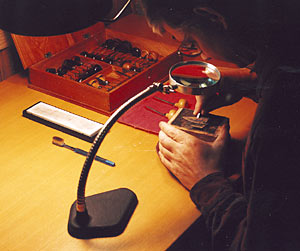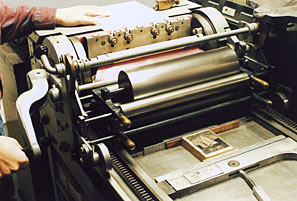|
|
|
Wood Engraving was the primary reproductive illustration medium of the last half of the Nineteenth Century. The amount of work and quality (in my opinion) peaked about 1890. Illustrated newspapers of the time such as Harper's and Frank Leslie's, as well as many books, were heavily illustrated with wood engravings. Some famous artists such as Winslow Homer drew for wood engravings, although cutting of the block was virtually always done by a skilled engraver. If you see for instance a "Winslow Homer Wood Engraving" don't be misled that he actually engraved the block. With the advent of photoengraving and the halftone process wood engraving was less used as a commercial process, eventually dying out. Wood engraving is a skill with a long and steep learning curve. There are extremely few engravers today who do this sort of work.
Wood Engraving differs from woodcut in that the end grain of the wood is used, rather than the side grain. The tools are not gouges, but rather are flat in cross section. Engraving blocks traditionally were made of European Boxwood. This is a dense, slow growing, fine grained wood. Bowxood yields small diameter logs and due to the splits encountered in the drying process may only produce useable squares of a couple of inches. To make larger blocks these are glued up and surfaced to give type high (.918) blocks composed of many squares, sort of like a parquet floor. Block making requires special skills and equipment, as well as a supply of quality wood. A good block is perfectly type high throughout, and glassy smooth on the engraving side. European Boxwood blocks are difficult to get these days, and expensive. I have had some luck with South American Boxwood, which is available and can be made into small blocks by hand, although very time consuming. Engraving blocks made of hard maple are available, although of varying quality, and a synthetic resin engraving surface is sold. Good quality engraving blocks are unobtanium these days, I usually use the resin blocks which work very well. The kind of engraving I do requires a very tight preliminary drawing. This is transferred to the block . Then I cut the block, using wood engraving tools and a magnifying glass. The detail is very fine and requires a delicate touch, and takes a good while to do. The engraving is the actual size of the final printed image. At various stages trial proofs are made to check the progress. Eventually I arrive at a proof which looks good, and I'm ready to print. |
| xx |

A South American Boxwood engraving block |
| xx |

Engraver's tools |
| xx |

Engraving the block |
| xx |

Making a proof |